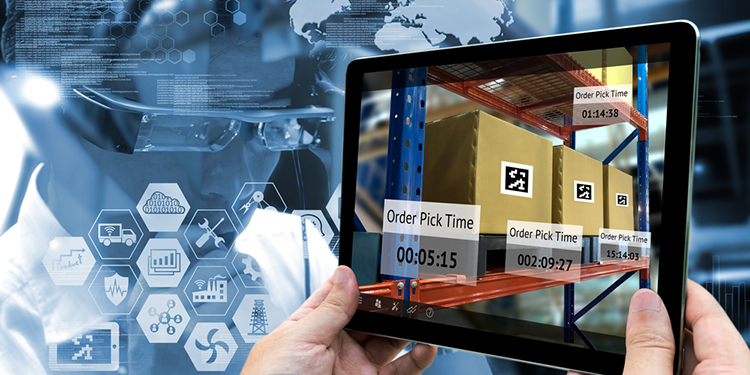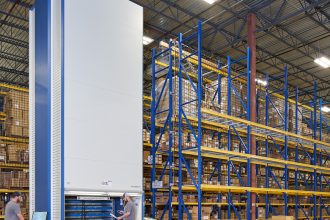Industry 4.0 And IIoT: Transforming Material Handling And Supply Chains

Industry 4.0 and the Industrial Internet of Things (IIoT) are two terms that are increasingly part of the conversation in material handling and supply chain circles. But how does an operations manager separate the hype from the reality? MHI’s Solutions Community has produced a 60-minute webinar, “How Industry 4.0 and IIoT is Transforming Material Handling and Supply Chain,” exploring the answers to that question.
First, the session overviews the current trends surrounding these solutions. It defines the Internet of Things (IoT) as the connection of computing devices embedded in everyday objects via the web to share data in real time. Also outlined is the evolution of IoT from PCs and servers to thin clients, such as tablets and human machine interfaces (HMIs), then to purpose-built monitoring and control systems within the industrial control and facilities management worlds, and finally to devices such as sensors and other connected products — including thermostats and doorbells. Utilizing these devices for connectivity within an enterprise, such as a manufacturing facility, warehouse or distribution center, is referred to as the IIoT.
Meanwhile, Industry 4.0, or the fourth industrial revolution, is the movement toward greater interconnectivity between automated equipment through data exchange to support intelligent, autonomous decision-making. It includes cyber-physical systems, IoT and cloud computing.
With regard to material handling equipment and supply chains, the session notes that many industrial systems have been embedded with devices that collect enterprise-useful data for many years. The trend today, however, is that this data is increasingly being directly accessed and leveraged throughout a connected enterprise to evaluate and enhance operations. That connectivity, for example, gives equipment manufacturers an opportunity to monitor the performance of a discrete system for predictive maintenance on a schedule based on actual usage, rather than anticipated wear.
In the second half of the webinar, the implications of an IIoT enterprise are discussed. One of the initial concerns many supply chain and warehouse operations managers have regarding increased digital connectivity is cyber security. A discussion of multiple management and mitigation strategies follows, outlining best practices in system deployment, remote monitoring, access control, system design and security planning. Key to successfully maintaining a secure network is collaboration between information technologies (IT) and operations technologies (OT) groups.
Within the materials handling space, IIoT opportunities for data exchange are extensive, including conveyance, automated storage and retrieval, sortation, automatic guided vehicles, robotics, palletizing, and picking — all of which have the potential to house integrated intelligent devices (smart sensors, controllers, readers, scanners, safety systems, cameras, frequency drives and more). These systems can not only share data but can also act somewhat autonomously based on various inputs, influencing throughput, supporting worker safety, and directing other functions. Additionally, the operation of automated equipment in particular is being increasingly driven at the device level as opposed to by controllers.
For supply chains as a whole, IIoT offers greater transparency and connectivity. With the intelligence of these systems, companies can continuously improve operations beyond just cutting costs, but rather by enabling greater degrees of availability, productivity, and efficiency as operations face relentless competition.
Want to learn more? The entire webinar is available for viewing, free of charge, here.



